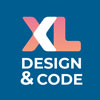
E-Commerce Web Design: Creating a Seamless Shopping Experience
In today’s digital age, e-commerce has become an integral part of retail, allowing businesses to reach a global audience and sell products or services online. However, the success of an e-commerce website hinges not only on the quality of its products but also on the design and user experience it offers. In this article, we’ll explore the importance of e-commerce web design in creating a seamless shopping experience for customers.
The Significance of E-Commerce Web Design
E-commerce web design plays a crucial role in attracting and retaining customers, driving conversions, and ultimately, boosting sales. A well-designed e-commerce website not only looks visually appealing but also functions intuitively and efficiently. Here are some key reasons why e-commerce web design is essential:
- User Experience: A user-friendly and intuitive interface makes it easy for customers to navigate the website, find products, and complete purchases, enhancing their overall shopping experience.
- Branding: The design of an e-commerce website should reflect the brand’s identity and values, helping to establish trust and credibility with customers and differentiate it from competitors.
- Mobile Responsiveness: With the increasing use of mobile devices for online shopping, e-commerce websites must be responsive and optimized for various screen sizes and devices to ensure a consistent and seamless experience across platforms.
- Conversion Optimization: Effective e-commerce web design incorporates elements such as clear calls-to-action, persuasive product descriptions, and streamlined checkout processes to encourage conversions and reduce cart abandonment rates.
- Search Engine Optimization (SEO): Well-structured and optimized e-commerce websites are more likely to rank higher in search engine results pages (SERPs), increasing visibility and attracting organic traffic.
Key Elements of E-Commerce Web Design
When designing an e-commerce website, it’s essential to consider the following key elements:
- Clean and Intuitive Layout: A clutter-free layout with clear navigation menus, prominent search functionality, and easy-to-find product categories enhances usability and encourages exploration.
- High-Quality Visuals: High-resolution images and videos showcasing products from multiple angles help customers make informed purchasing decisions and create a visually appealing shopping experience.
- Clear Product Descriptions: Concise and informative product descriptions highlight key features, benefits, and specifications, aiding customers in understanding the product and its value.
- Secure Payment Gateway: Integration with trusted payment gateways and SSL encryption instills confidence in customers and ensures the security of their personal and financial information during checkout.
- Responsive Design: E-commerce websites should adapt seamlessly to different devices and screen sizes, providing a consistent and optimal experience for users on desktops, laptops, tablets, and smartphones.
- Fast Loading Speed: Optimized page loading times improve user experience and reduce bounce rates, as customers are less likely to abandon a website that loads quickly.
Best Practices for E-Commerce Web Design
To create a successful e-commerce website, follow these best practices:
- Focus on Usability: Prioritize ease of use and functionality to ensure that customers can find what they’re looking for quickly and efficiently.
- Optimize for Mobile: Design with a mobile-first approach, considering the needs and preferences of mobile users in terms of layout, navigation, and interactions.
- Streamline Checkout: Simplify the checkout process by minimizing the number of steps required and offering guest checkout options to reduce friction and improve conversion rates.
- Implement Trust Signals: Display trust badges, customer reviews, and security certifications to reassure customers and alleviate concerns about privacy and security.
- Provide Excellent Customer Support: Offer multiple channels for customer support, such as live chat, email, and phone support, to assist customers throughout their shopping journey and address any issues or questions they may have.
Conclusion
E-commerce web design is a critical factor in creating a seamless shopping experience that delights customers and drives business success. By focusing on usability, visual appeal, mobile responsiveness, and other key elements, businesses can create e-commerce websites that not only attract and retain customers but also generate sales and revenue. Investing in professional e-commerce web design is essential for businesses looking to thrive in the competitive online marketplace.
